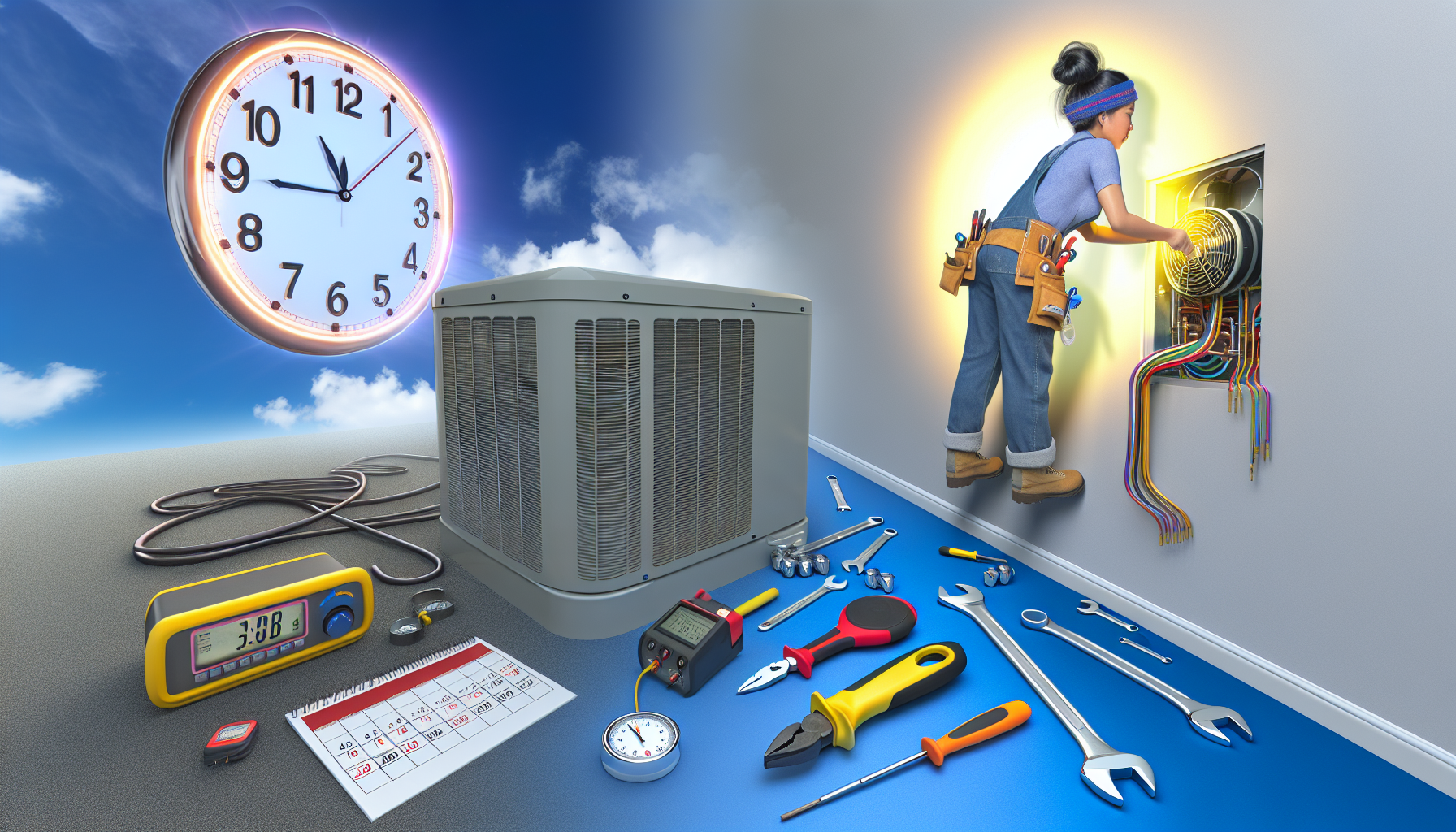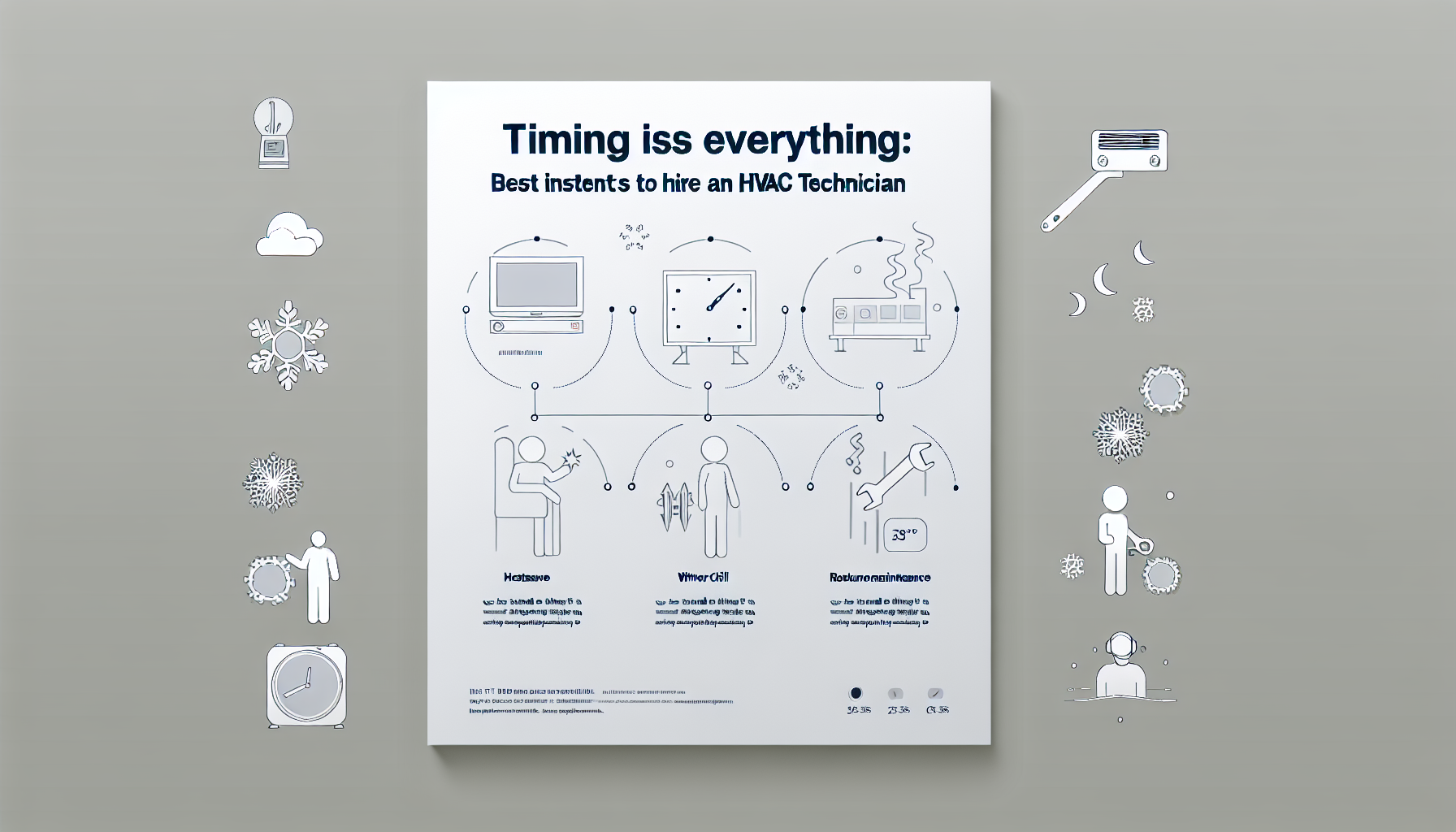Understanding the Importance of Strategic Hiring
As an HVAC business owner or manager, the strength of your team can have a direct impact on your company’s overall success. Strategic hiring is about more than just filling vacancies as they appear; it’s about understanding the optimal times to add new technicians and how these decisions can benefit your business operations, growth, and customer satisfaction. This article will delve into key considerations for timing the addition of an HVAC technician to your workforce.
Assessing Your Business Needs
Before you even contemplate the timing of a new hire, you must first assess your business needs. This involves evaluating your current workload, the capacity of your current team, and projected future demands. Anticipating busy periods and growth will allow you to plan and avoid being short-staffed when your services are most in demand.
Projecting Peak Seasons
One of the most effective strategies is to align your hiring with peak HVAC seasons. As demand for HVAC services rises in the scorching summer months and chilly winter season, ensure you have enough technicians to handle the increase in service calls and installations.
Growth Trends in Your Business
Keep a close eye on your company’s growth trends. Are you expanding your services or your geographic reach? These changes might necessitate the addition of new team members to maintain the quality of service and response times your customers expect.
Technological Advances
As the HVAC industry continues to evolve technologically, there may be a need to hire technicians who possess specific new skills or certifications. This will ensure your team remains competitive and capable of meeting modern demands.
Timing Your Hiring Decisions
Understanding that timing can make a significant difference in your hiring process is paramount. Here is how to pinpoint the best time to bring a new HVAC technician on board.
Off-Peak Season Preparation
Contrary to what one might assume, the off-peak season can be the perfect period for hiring. It gives your new technician time to become acclimated to your company culture, receive necessary training, and slowly integrate with the existing team without the added pressure of peak season demands.
Before Major Marketing Campaigns
If you’re planning a major promotional push or marketing campaign that is likely to bring in new business, consider hiring before it launches. This ensures that you have the manpower to effectively respond to any surge in customer inquiries and service requests.
Retirement and Turnover Anticipation
Strategically plan for the future by recognizing when your seasoned technicians are due to retire. Additionally, monitor patterns of turnover within your team – understanding why technicians leave can help adjust your hiring timeline and strategy.
Ensuring a Smooth Transition
Hiring at the right time also involves making the transition as smooth as possible for everyone involved.
Structured Onboarding Process
Having a structured onboarding process in place will help new technicians adapt quickly and ensure they’re up-to-date with your company’s operational procedures, safety standards, and customer service policies.
Staggered Hiring
If you’re hiring multiple technicians, consider staggering your hires. This can make training more manageable and allow for each new employee to receive the attention they require to succeed.
Continuous Training
Invest in continuous training, not just for new hires but also for your existing team. A team that is regularly upskilled will maintain high standards in an ever-evolving industry.
Calculating the Financial Impact
Hiring a new technician also has financial implications. It’s crucial to understand how this new hire will affect your bottom line.
Return on Investment (ROI)
Consider the potential return on investment of a new hire. Will the technician generate enough revenue to cover their costs and contribute to profit? Finding the balance between spending on new hires and the revenue they will generate is a delicate and important part of strategic hiring.
Budget Considerations
Take a detailed look at your budget before hiring. Can your current financial situation support additional staff? Factor in salary, benefits, training, and any additional tools or resources the technician will need.
Cost of Vacancy vs Cost of New Hire
It’s also worth evaluating the cost of having an unfilled position (such as lost productivity and overworked staff) against the cost of bringing on a new team member. Which scenario is more economically favorable for your business in the long run?
Embracing Your Hiring Strategy
Once you’ve determined that the timing is right, embrace your decision and move forward with purpose. Ensure your hiring process is thorough, leaving no stone unturned in seeking the best candidate who aligns with your company values and technical requirements.
Final Thoughts
Strategic hiring can lead to lasting rewards for your HVAC business. By considering the timing of your needs, seasonal demands, financial implications, and the overall readiness of your business, you can make informed decisions that foster growth and increase customer satisfaction.
FAQs About Strategic HVAC Technician Hiring
When is the best time to hire an HVAC technician?
The best time to hire an HVAC technician is well before your peak season begins or during slower periods to allow for adequate training and integration into your company.
How does one determine whether a new hire will provide a good return on investment?
Calculate potential ROI by estimating the additional services the technician can perform, the increased revenue they can generate, and how this compares to their hiring and employment costs.
How long does it typically take for a new HVAC technician to become productive?
It varies by individual and company, but typically it takes a few weeks to several months for a new HVAC technician to be fully trained and integrate seamlessly into the team for maximum productivity.
What should be included in an onboarding process for an HVAC technician?
An onboarding process should include an introduction to company culture, training in operational procedures, safety standards, customer service expectations, as well as any necessary technical upskilling.










